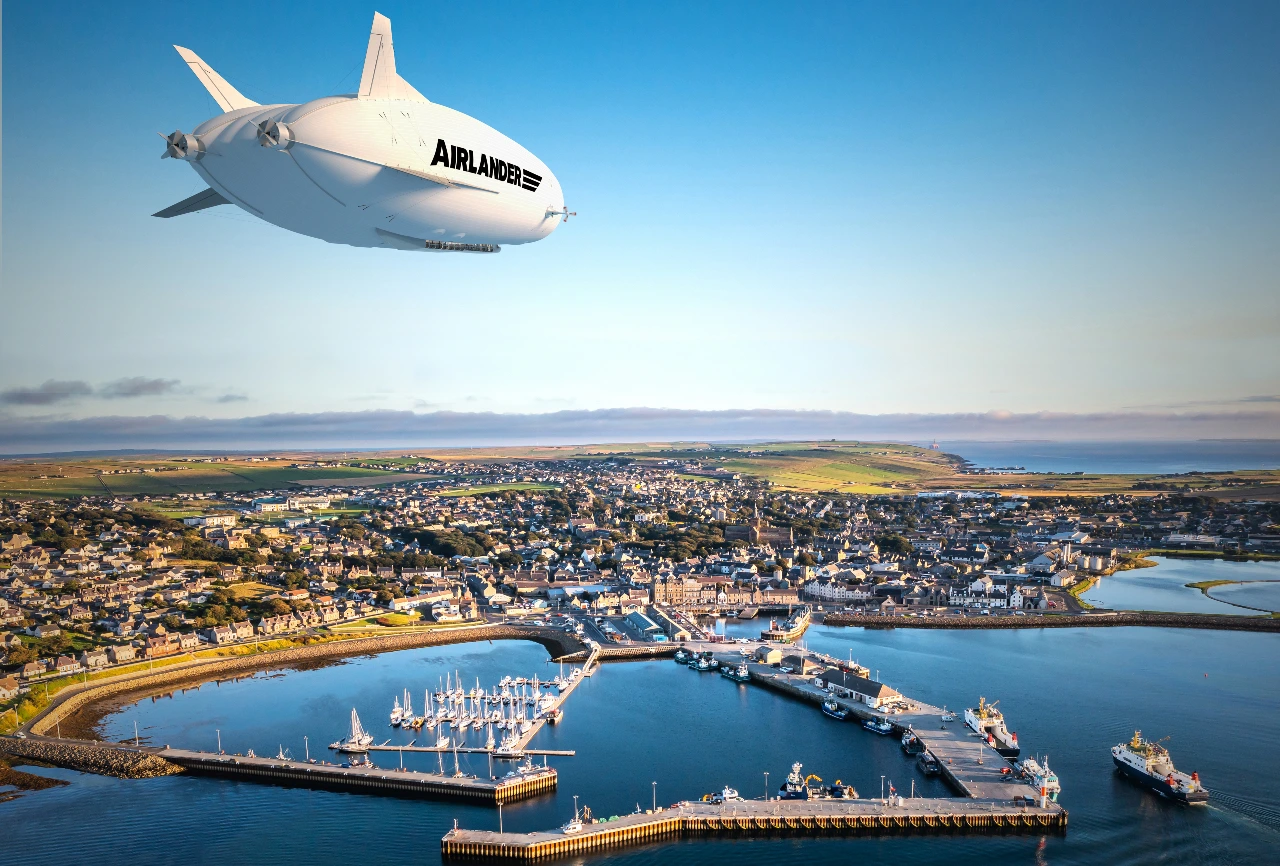
In spring, in news that probably didn’t make the national papers, Hybrid Air Vehicles (HAV), the company behind the Airlander airships (still called blimps to many), announced that Mayor Oliver Coppard of South Yorkshire and the South Yorkshire Mayoral Combined Authority (SYMCA) had granted their approval for an investment and support package.
This initiative aims to facilitate HAV in its endeavour to manufacture environmentally-friendly Airlander 10 aircraft within the Doncaster region. In fact, last summer, HAV confirmed that it had received its first commercial order – ten blimps (airships) to be delivered to European-based Air Nostrum Group, starting in 2026.

Bedfordshire-based HAV developed the 100-seater Airlander 10 blimp out of Cardington airfield in the UK, with the aim of creating an eco-friendlier form of travel, one the company believes will “[cut] flight emissions by up to 90%” on some region routes.
South Yorkshire’s Mayor Oliver Coppard said: “I was elected as South Yorkshire’s Mayor on a pledge to build on our world-leading assets in the region and create a bigger, smarter and greener economy.
“As our neighbours across the Atlantic have proved, investing in the potential of green technologies will not only help us tackle the climate emergency, it will help us create high-quality new jobs and grow a bigger, better economy, which takes everyone with it.
“We have a world-class cluster of companies working at the cutting edge of advanced manufacturing and green technology, so I’m genuinely excited that we can support HAV in their ambitions to build a sustainable aviation cluster here in Doncaster.”
But why has it taken so long for airships to make a comeback?
What is an airship? Is it different to a blimp?
‘Airship’ is a term for all motorised lighter-than-air craft, including blimps (which have inflatable air compartments) and zeppelins (which have rigid ones). They first came into existence after the development of the internal combustion engine, though a few daring aviators tried to pilot airships powered by steam engines. The first modern airship, the Zeppelin LZ1, took flight in 1900 – three years before the Wright Brothers made their famous flight.
Due to their relative cost-effectiveness and longer range, airships were seen as the more attractive form of air travel in the early 20th century. They also played a key role as military aircraft and were used for bombings in the First World War. By the 1930s, luxury airships (blimps and zeppelins) were whisking well-to-do passengers across the Atlantic Ocean and were considered a technological marvel. They even had an influence on the urban landscape; it’s rumoured that the spire of the Empire State Building was designed to be converted into an airship dock.
The problem blimps face
But all that came crashing down with the infamous explosion that destroyed the Hindenburg on 6 May 1937. During a landing in Lakehurst, New Jersey, the hydrogen-filled craft exploded in a massive fireball. The cause of the fire is still unknown today.
It wasn’t the deadliest airship disaster – that honour goes to the British-built R101, which crashed in France in 1930 – but it was perhaps the most dramatic, and even though the majority of the Hindenburg’s passengers survived, airship travel became an instant pariah. It seems likely that airships would have been phased out anyway due to improvements in aircraft technology that allowed for much shorter travel times – but the Hindenburg disaster ended the era of passenger airships virtually overnight.

Since then, the use of airships, whether blimps or zeppelins, has been extremely limited, as technological advances have allowed aircraft and helicopters to dominate aviation. Though blimps played a useful surveillance role in the Second World War, airships today are mostly used for overhead photography at sports events and as massive flying billboards.
Perhaps the biggest problem, though, is the cost of fuel. Airships (or at least, the non-exploding variety) require large amounts of helium, a rare substance, which can cost upwards of $100,000 for one trip. In 2012, rising helium costs were enough to bankrupt a tourist airship company in Northern California.
Some scientists even believe that, unlike many resources, helium could one day actually run out: partly because it’s light enough to escape Earth’s gravity well, but mostly because it’s uneconomic to harvest it once it has escaped into the atmosphere. All this raises questions about whether a form of transport dependent on it could ever, well, get off the ground.
However, HAV’s website states: “According to the US Geological Survey, there are at least 50 years of known helium reserves based on current consumption. 600 Airlander aircraft would account for just 1% of annual helium consumption.”
Tom Grundy, CEO of HAV, summarised the hopeful future of the industry, stating: “Airlander is designed to deliver a better future for sustainable aviation services, enable new transport networks and provide rapid growth options for our customers. Our partnership with Air Nostrum Group, as the launch airline for Airlander 10, leads the way towards that future.
“As countries like France, Denmark, Norway, Spain and the UK begin to put in place ambitious mandates for the decarbonisation of domestic and short-haul flights, Hybrid Air Vehicles and Air Nostrum Group are demonstrating how we can get there – and get there soon.”
[Read more: 6 terrible construction projects we’re kind of glad were never built]






